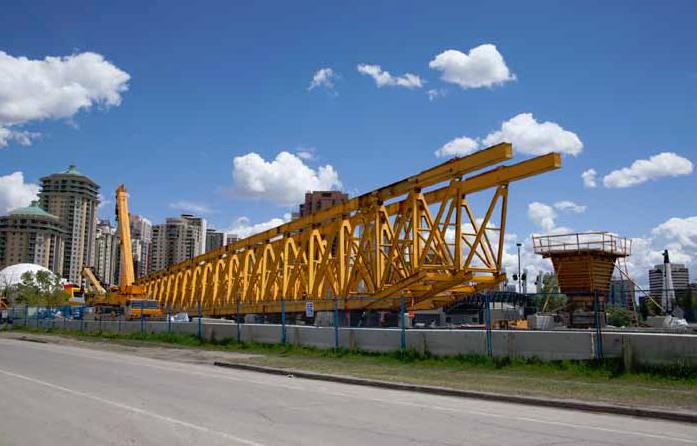
Calgary’s West LRT project represents a number of firsts and other major milestones for the western Canadian city and the province of Alberta. Keith Regan learns how the project’s intentional detour through an extensive public interaction and feedback process is helping to make for a smoother ride now that construction is well under way.
The western Canadian city of Calgary, Alberta, has long recognized the value of extending its growing light rail transit (LRT) system to the west side of the metropolis, which in the past decade has grown by leaps and bounds as nearby oil sands projects have helped boost the economy. An initial functional study of the idea of extending light rail to the western fringe of the city was completed some 27 years ago, only to sit on a shelf for some time.
But in 2006 the project was revived as part of a larger effort to engage the Calgary community on issues of land use. What ensued was a large-scale effort to gather public input around station design and urban design. By mid-2008 the City Council had approved a revised alignment incorporating citizens’ suggestions. At the same time, the Council adopted the public engagement plan, a first for the city, according to Christian Cormier, communications coordinator for the project.
“We had more than 120 public meetings with the community,” Cormier says. “This is a line that is being built for the communities it will serve, so we wanted those communities to take ownership and have a say in how the stations and the line itself integrated with the community.”
As a result of the public feedback, the 8-kilometer extension was designed to feature the city’s first elevated LRT guideway and station, Sunalta Station, which will have the added benefit of knitting back together two neighborhoods cut off by a major road with the connection to a pedestrian bridge. “That’s a perfect example of how the public engagement process enabled us to make a better project,” says Cormier.
Another project highlight includes the first underground station. The project is also the first new LRT line in Calgary in more than two decades and the largest infrastructure project in the city’s history.
The line’s six new stations will feature a common architectural language, which Cormier described as Chinook arch, though each station will also feature a unique design reflecting the input of the community it will serve. “Our mission was to strike that balance,” he says. “We wanted to get that local input because citizens know their communities best. But we also needed to have a consistency along the line, and we worked hard to bring everyone together on the final station and urban designs.”
Beyond the LRT line itself, the public had a major hand in helping to shape the future development of the catchment area. For instance, in the area near the Westbrook station, where an existing mall and extensive prime land sits, the public helped shape a planned transit-oriented development (TOD) that will include a mix of residential and retail uses. “We’ve always been a forward-looking city in terms of land use and development issues, and these are more examples of how we can stay on that cutting edge,” Cormier says. The LRT line will be used mainly by commuters into the booming downtown business district from the fast-growing suburbs to the west, as well as by a recreational center, a community college and a new high school that is also being built.
The public engagement process helped create a foundation for the ongoing communication that is necessary to make the project run smoothly. Traffic disruptions are unavoidable, particularly as two major access roads to downtown Calgary are within the construction zone. The project team uses an interactive website, email alerts and the local media to keep commuters and residents updated on changes and progress. “There is a lot of coordination that has to happen on the ground to make sure things run smoothly, and the team we have in place is going a great job of making sure that stakeholders are kept informed in a timely manner,” Cormier says.
The project was put out to bid at a favorable time, in mid-2009. Some of the budget savings reaped so far have been plowed back into the project. For instance, a third wing that was not in the original budget has been added to the new high school being built to replace an existing school that needed to be moved to make way for the TOD site at Westbrook.
Work is progressing on schedule as well. The City of Calgary embraced a design-build approach to help move the project forward more quickly, with a joint venture consortium led by SNC-Lavalin along with Graham Infrastructure, CANA and ENMAX securing the design-build contract.
Major utility relocation and roadworks construction will likely be wrapped up next year, and current plans call for the line to begin revenue service in December 2012. “When you look at the project from start to finish, including the engagement process, we will have finished the project within five years, and that includes more than a full year of public engagement,” says Cormier.
Once it is up and running, the LRT line will get its power from wind—all of the Calgary LRT’s power comes from that source. “That’s just one of our green initiatives that help the City of Calgary reduce its carbon footprint,” says Cormier.
“Calgary has seen substantial growth on its west side,” he adds. “In the next decade or so there will be more and more people on that fringe of the city. And the West LRT line will offer them a safe, reliable, fast and clean transportation option.”













